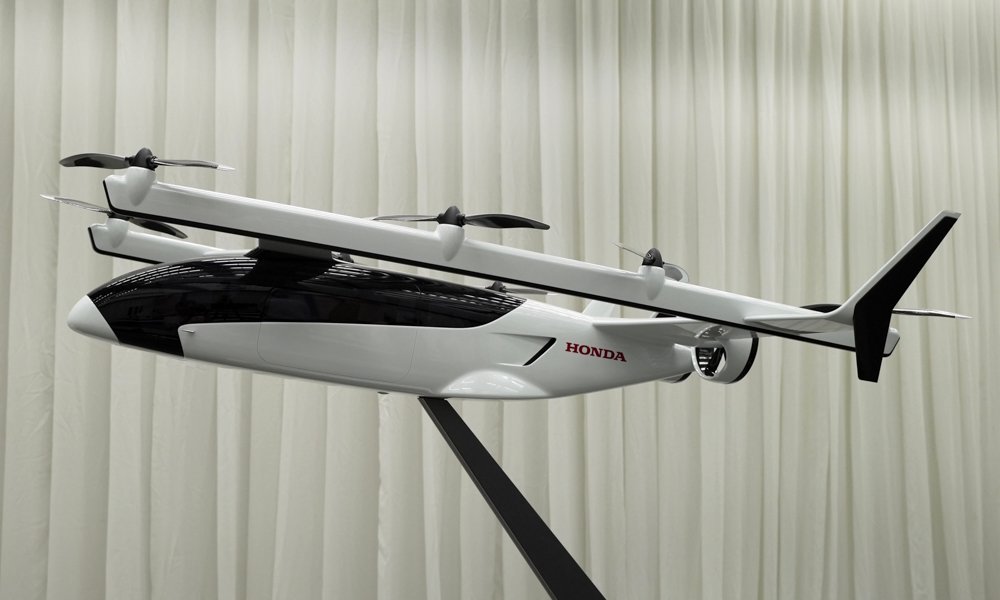The race to dominate the electric vertical takeoff and landing (eVTOL) market is heating up, and a new heavyweight has just entered the arena—Honda. Long admired for its engineering excellence in cars, motorcycles, marine engines, and even business jets, Honda’s move into urban air mobility could prove to be a game changer.
The Auto Industry’s Measured Approach to eVTOLs
While battery and electric drivetrain technology have seen rapid advancements in the automotive industry, car manufacturers have mostly approached eVTOL development cautiously. Toyota has made headlines with its investment in Joby Aviation, and Hyundai has introduced its Supernal-branded eVTOL. Honda, known for strategic and often understated innovation, had kept its plans largely under wraps—until now.
Honda Takes Flight
In October 2024, Honda made a significant announcement: it had received clearance from the FAA to begin test flights of its eVTOL prototype. This marked the company’s transition from silent observer to active player in the advanced air mobility space.
Though Honda had teased the concept with a promotional video three years ago, it was largely dismissed as a design exercise. But that animation has now proven to be the tip of a much deeper, more serious effort.
A Different Design Philosophy: Lift + Cruise
In contrast to the tilt-rotor design favored by many eVTOL developers, Honda has adopted a Lift + Cruise configuration. This design separates the lifting and cruising mechanisms—using one set of rotors for vertical lift and another for horizontal flight.
Why Lift + Cruise?
Tilt-rotor systems carry inherent risks: a failure in a shared rotor system can be catastrophic. By splitting the functions, Honda improves redundancy and safety. Other players, like Autoflight with its Prosperity aircraft, have also embraced this safer yet technically more challenging layout.
The downside? Once in forward flight, lift rotors no longer serve a purpose, becoming dead weight and adding drag—thereby increasing energy consumption. To solve this, Honda has turned to a hybrid power system.
Hybrid Power for Extended Range
Rather than relying solely on batteries, Honda’s eVTOL is powered by a gas turbine generator paired with a small battery pack. This hybrid setup offers a significantly extended range—up to 400 km (250 miles)—making it viable not only for intra-city travel but also for regional, city-to-city routes.
Aviation Isn’t New to Honda
This isn’t Honda’s first foray into the skies. The company’s HA-420 HondaJet has received critical acclaim in the business aviation market. By combining its aerospace knowledge with hybrid power experience from Formula 1, Honda brings a unique skillset to the table.
The company stated:
“F1 technologies, both tangible and intangible, have also been incorporated into the development of our eVTOL… including F1 power unit technology applied for the ultra-high RPM generator, simulation analysis for aerodynamic development, and racing chassis designs suited to high-speed airflow.”
In fact, the development of the HF120 turbofan engine—built in collaboration with GE for the HondaJet—is now directly informing the gas turbine generator being developed for the eVTOL.
Design and Features: What We Know So Far
Although full specifications remain under wraps, here’s what Honda has revealed:
- Lifting System: 8 vertical propellers mounted on two booms
- Cruise Propulsion: 2 ducted fans at the rear
- Configuration: High main wing with a front canard, similar to the Autoflight Prosperity
- Capacity: 4 passengers + 1 pilot (total 5 occupants)
- Propulsion: Hybrid gas turbine-electric system
- Range: Approximately 400 km (250 miles)
Honda’s Edge: Certification & Engineering Prowess
Unlike many eVTOL startups, Honda has deep experience navigating complex certification processes. The company has already been granted four patents related to its eVTOL program:
- Power supply optimization
- Heat dissipation systems
- Energy management techniques
- Thrust and directional control mechanisms
Conclusion: More Than Just Another Player
Honda’s entry into the eVTOL space is not just another announcement—it’s a serious investment backed by decades of multidisciplinary engineering experience. With roots in Formula 1, jet aviation, and hybrid vehicle technology, Honda is uniquely positioned to accelerate eVTOL development in ways few others can.
As the company moves forward with flight testing and further reveals, one thing is clear: Honda is not just playing catch-up. It may very well redefine the standards for safety, efficiency, and practicality in urban air mobility.
